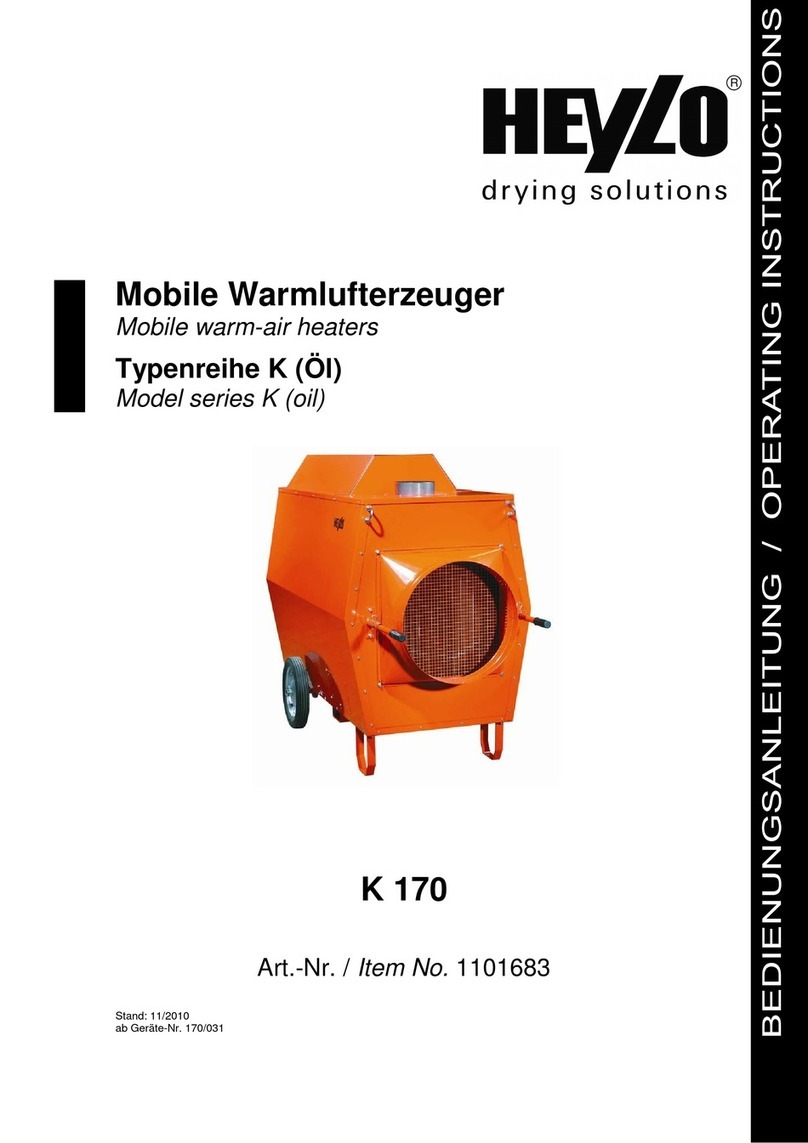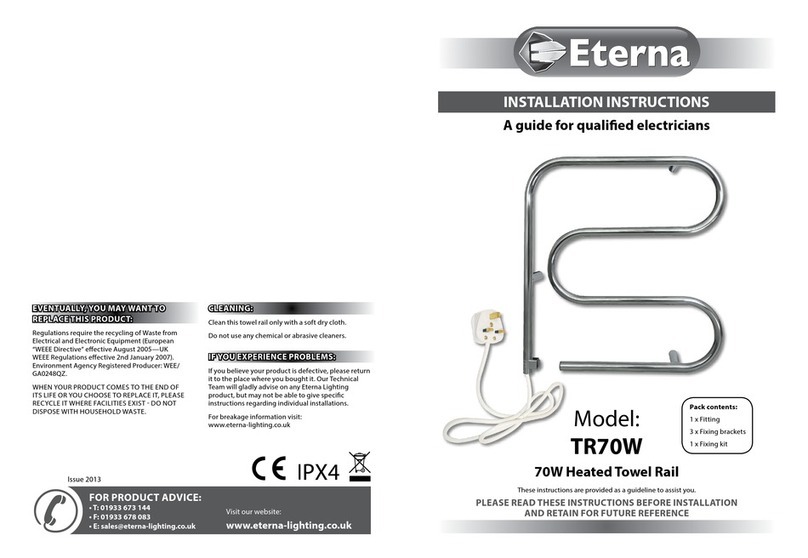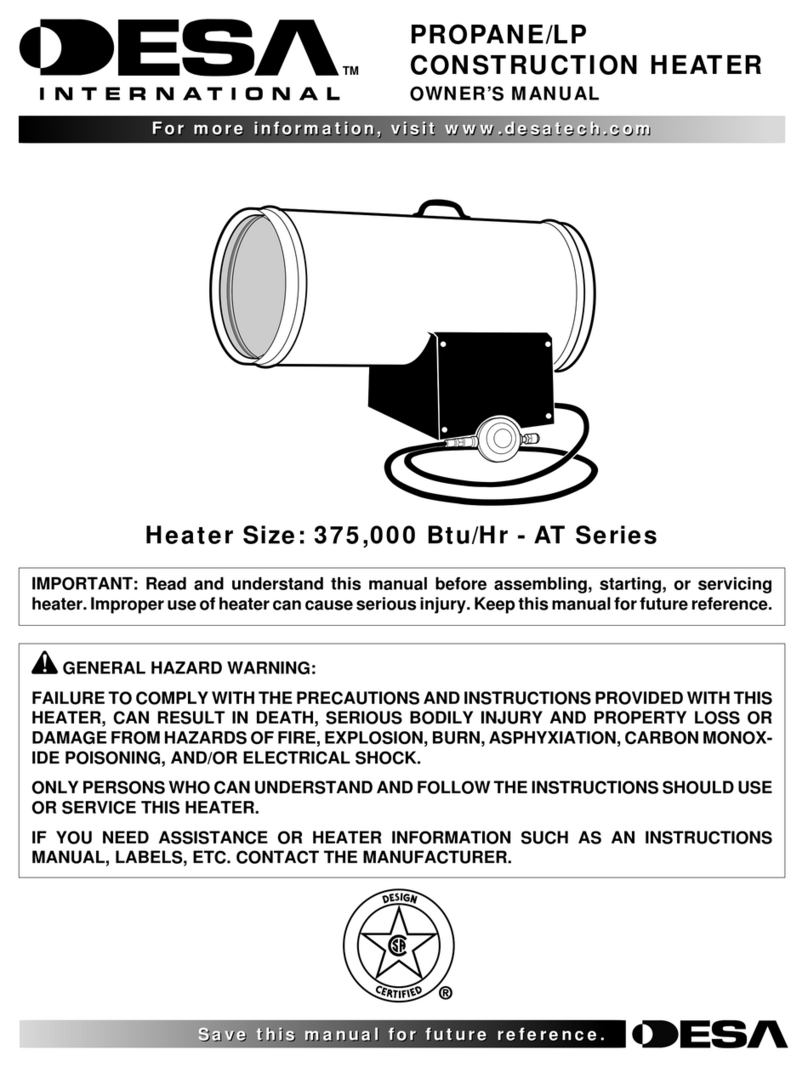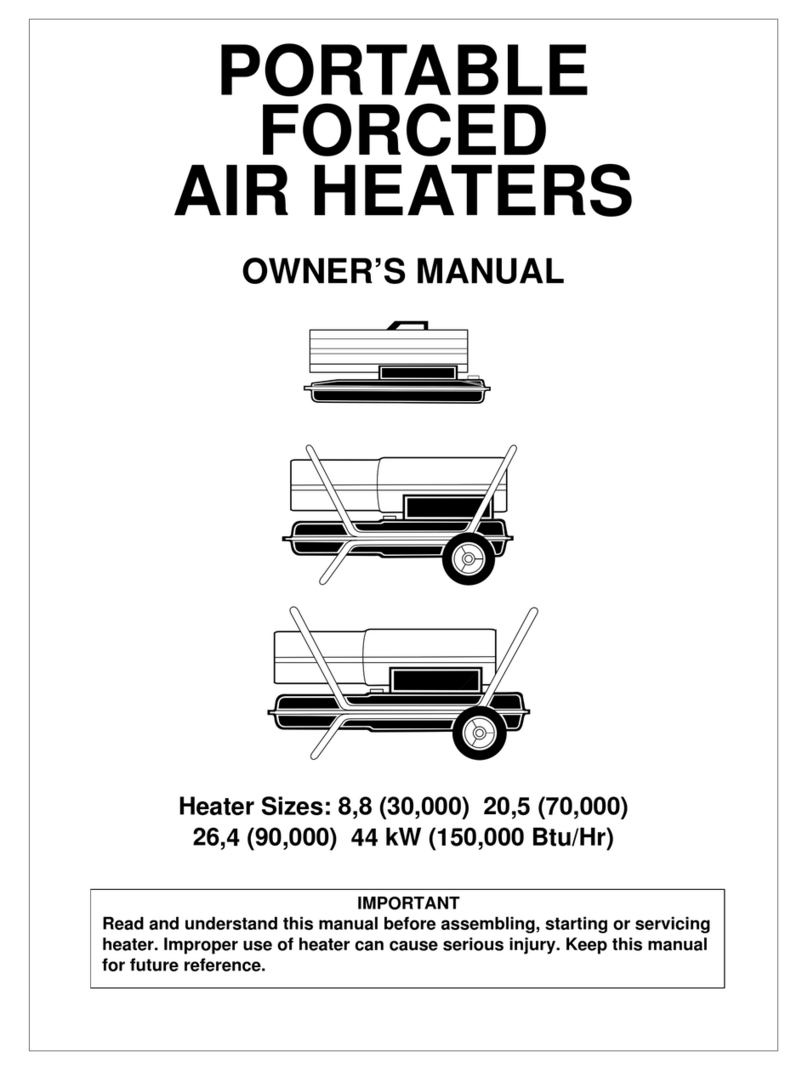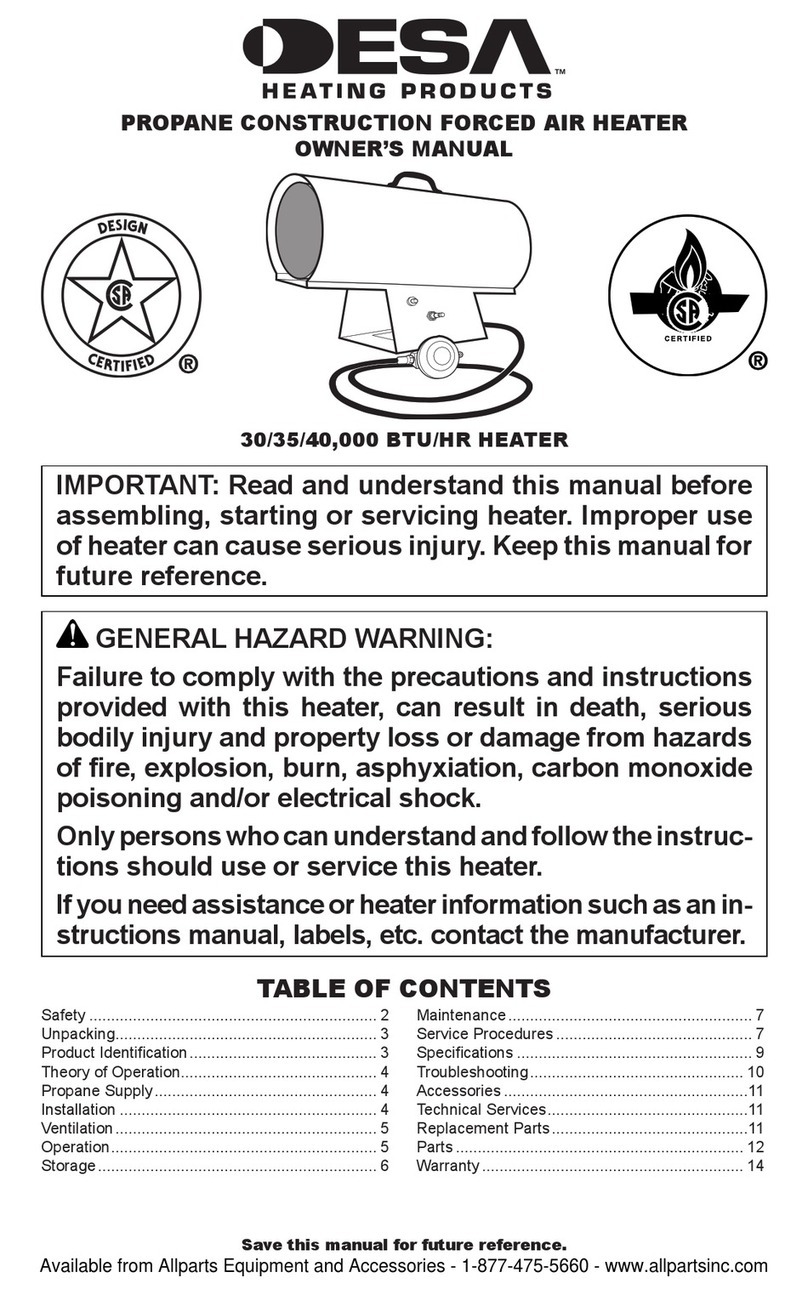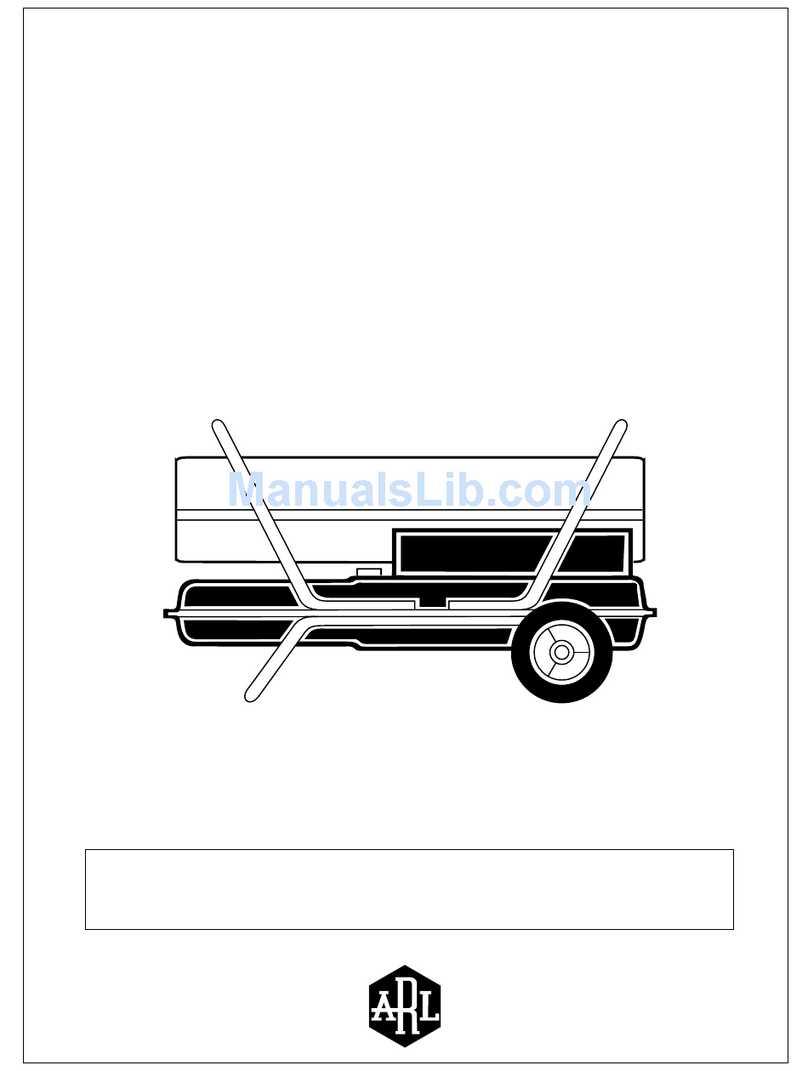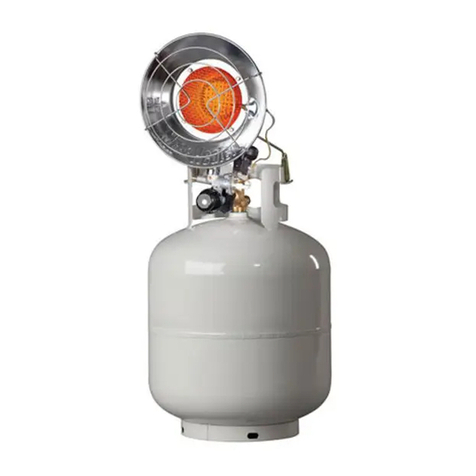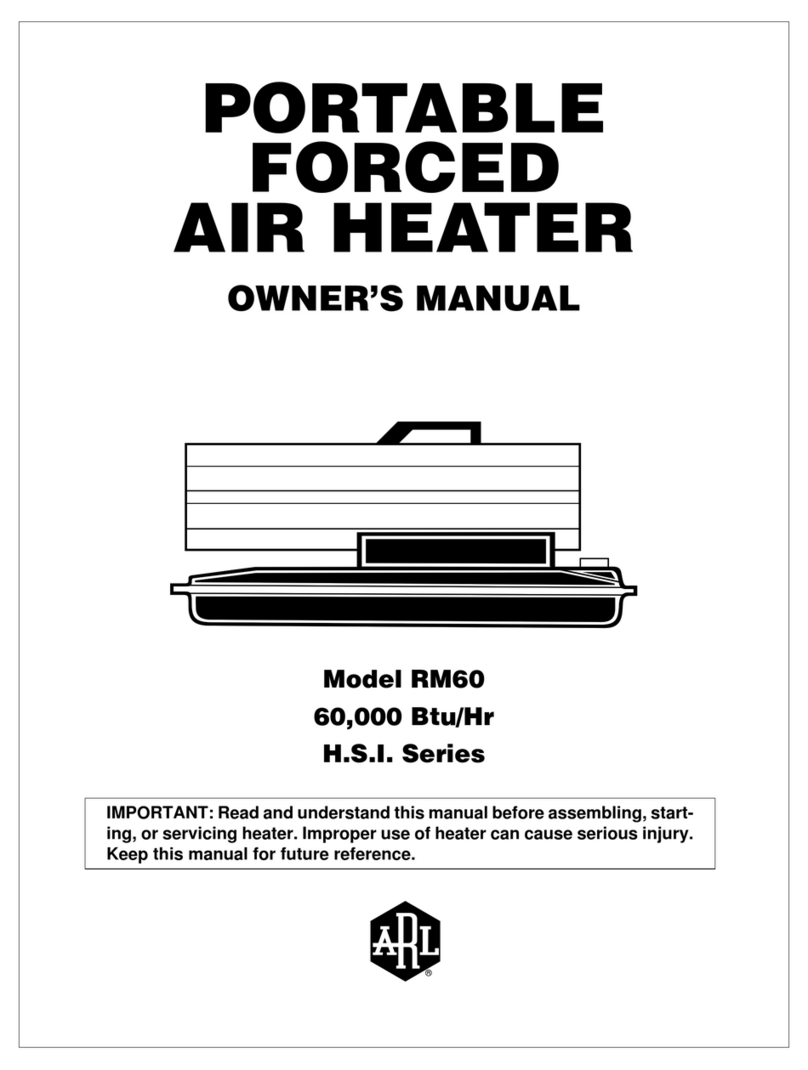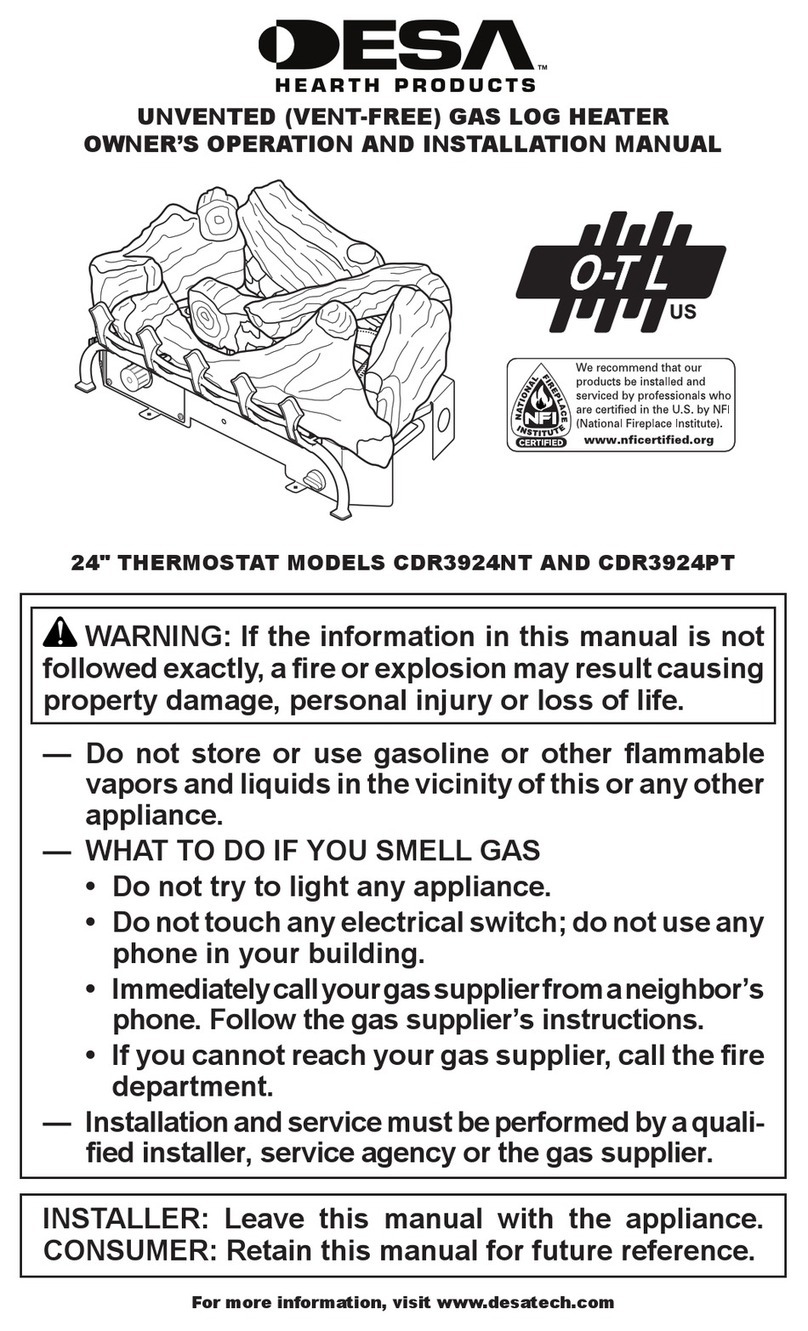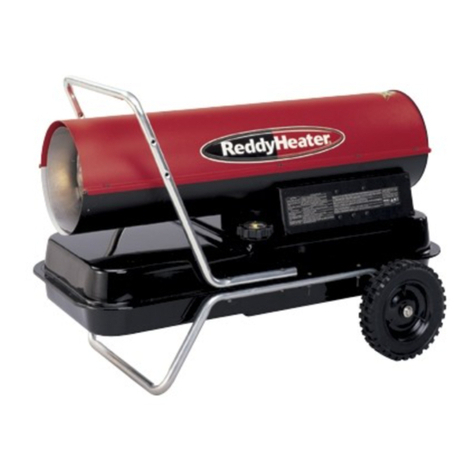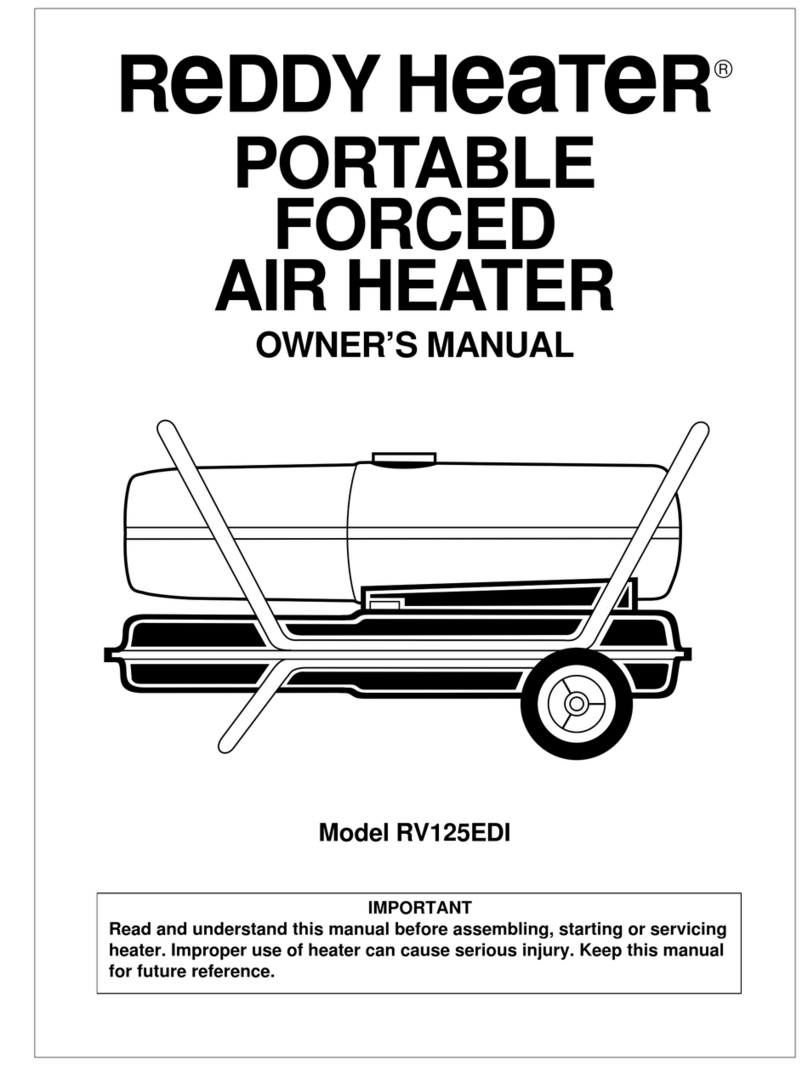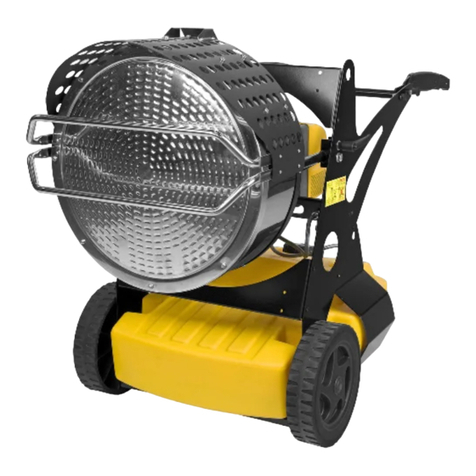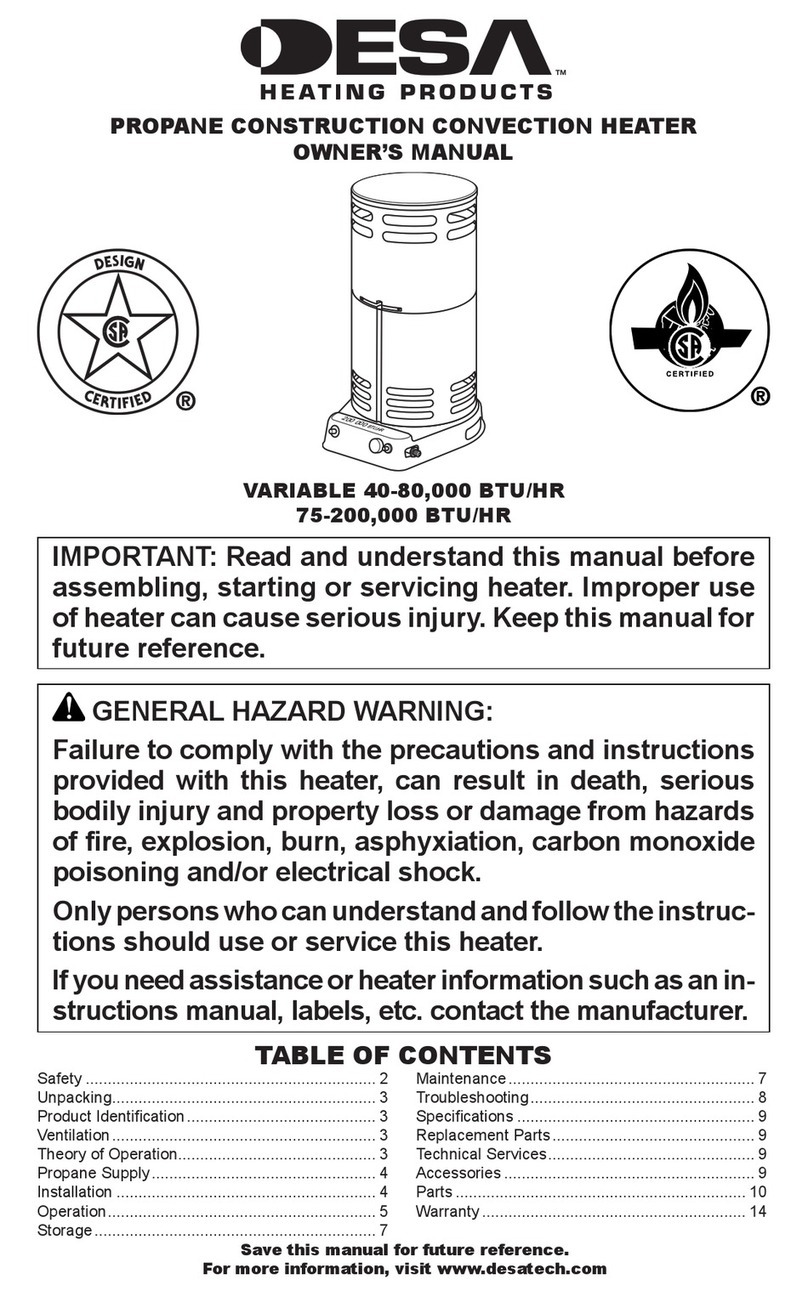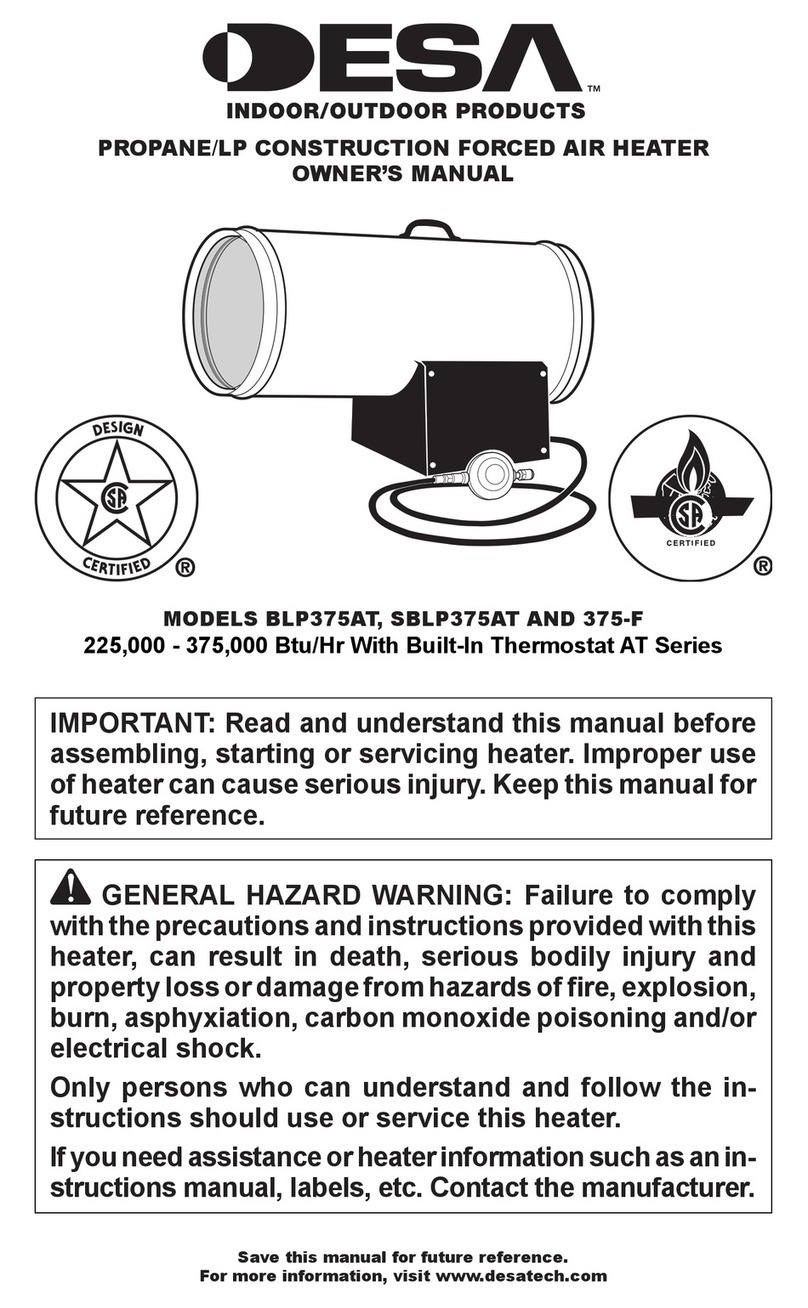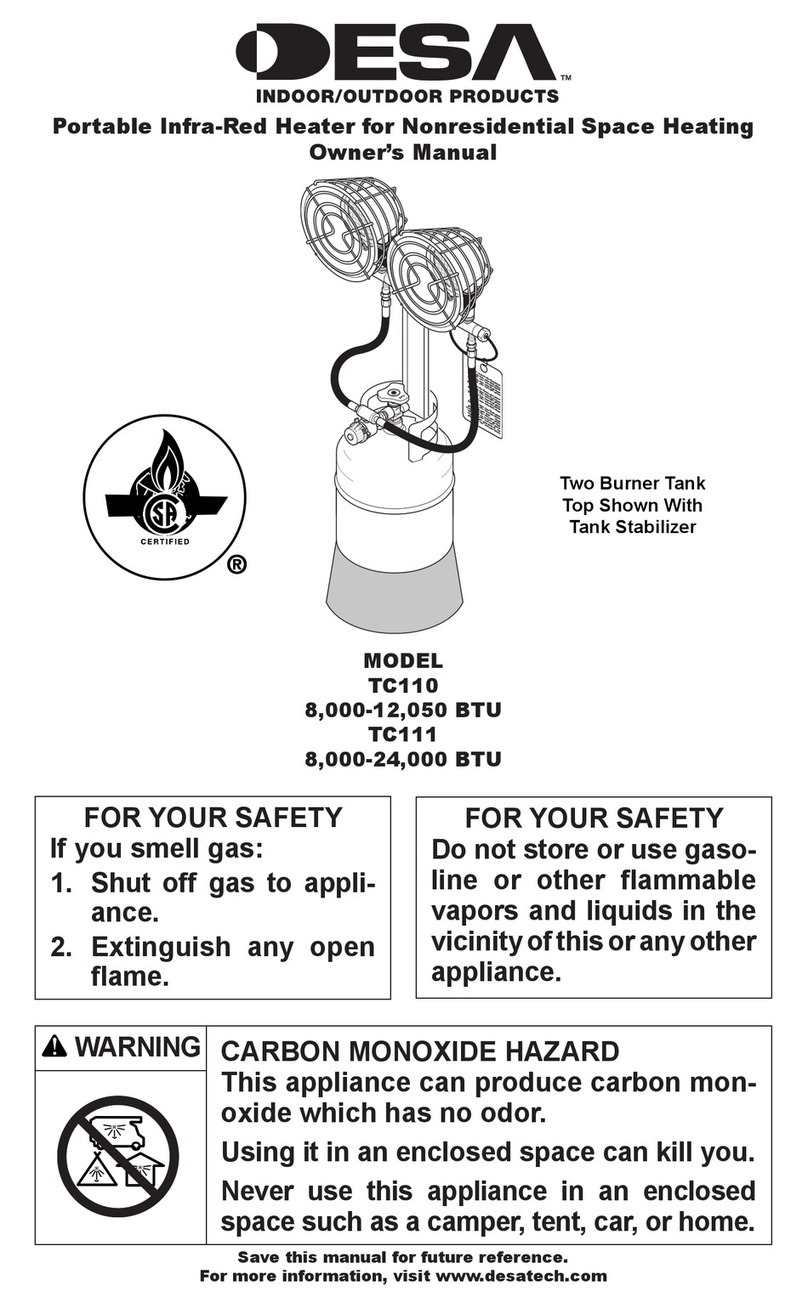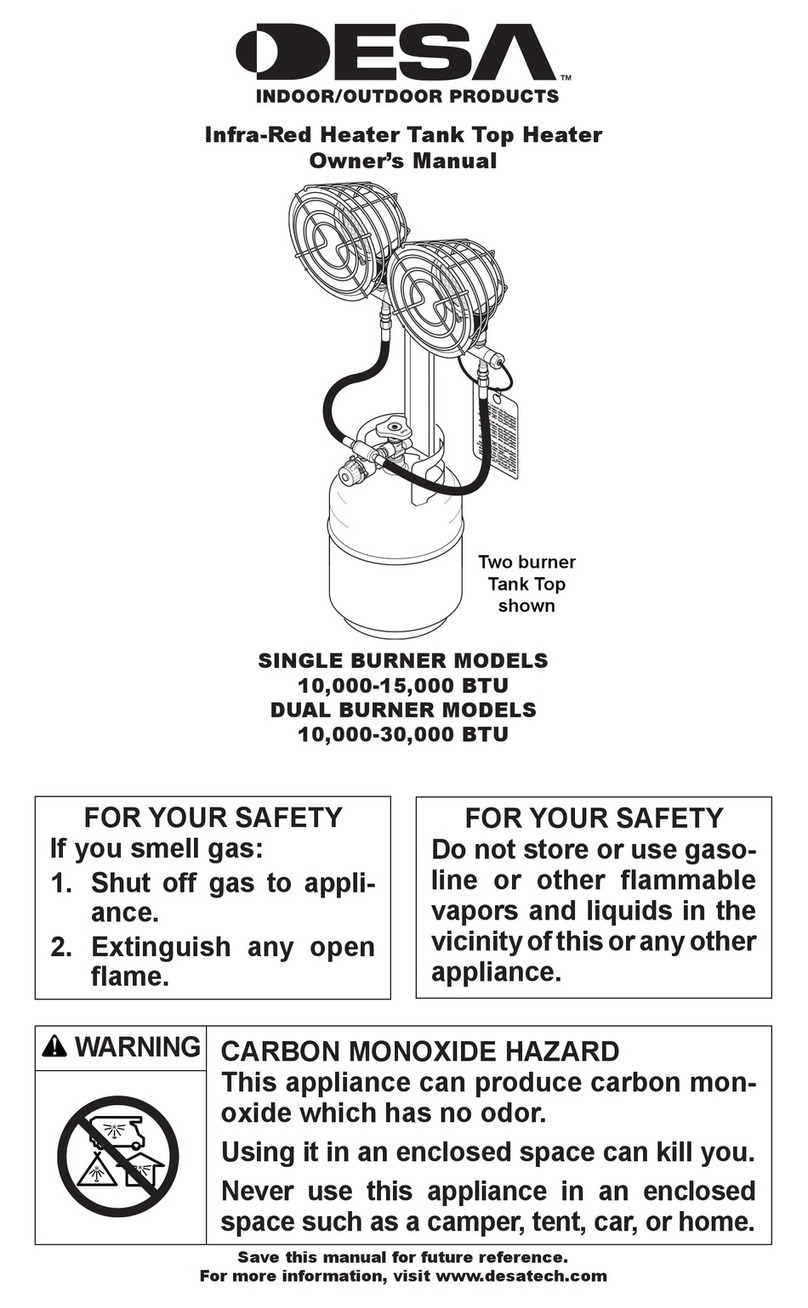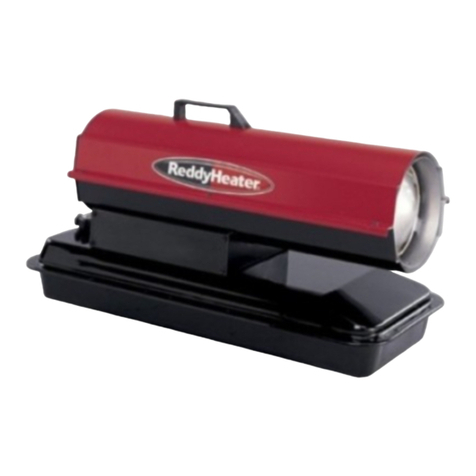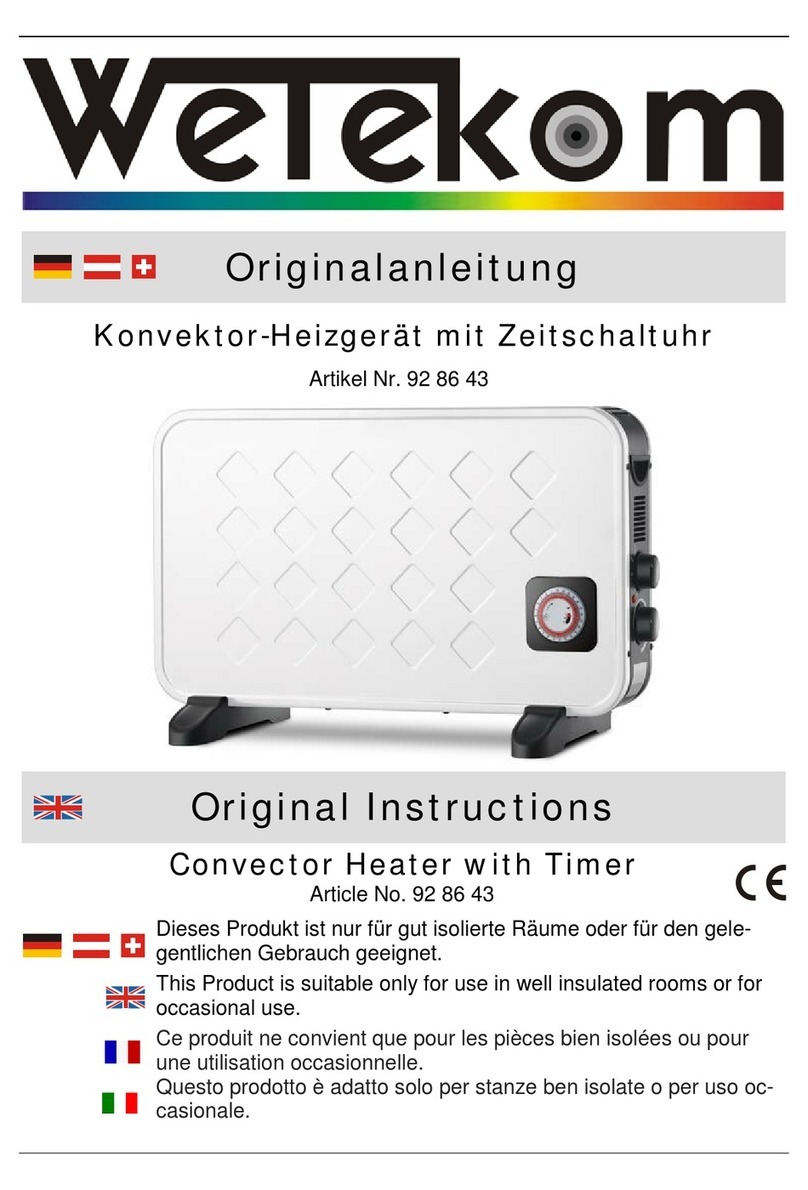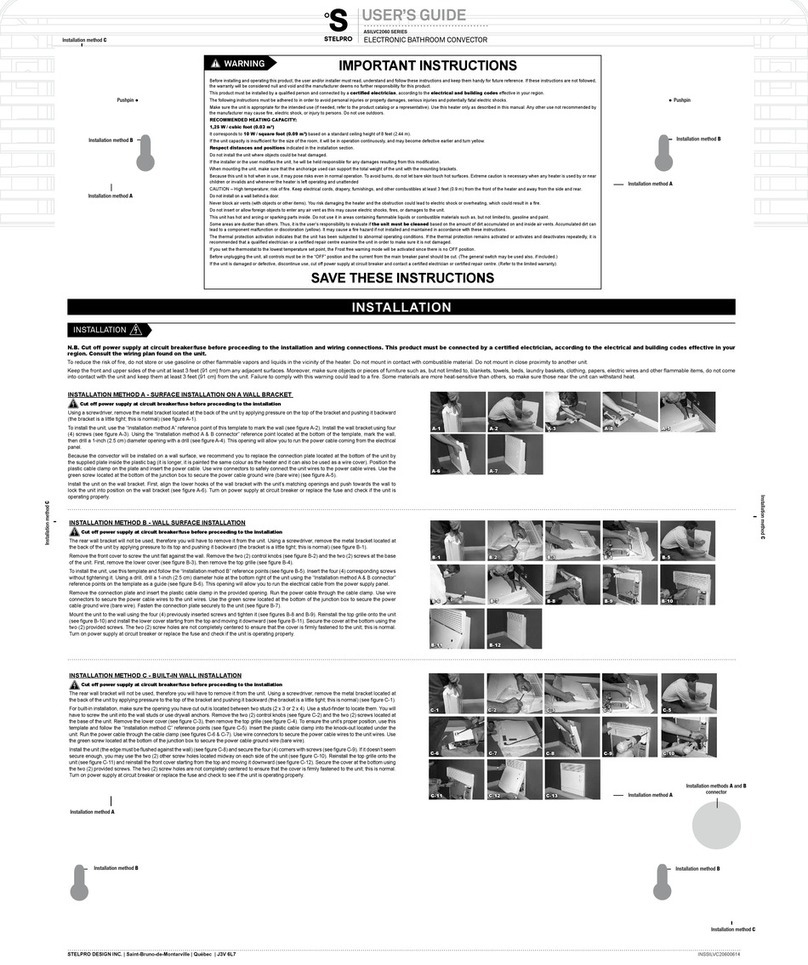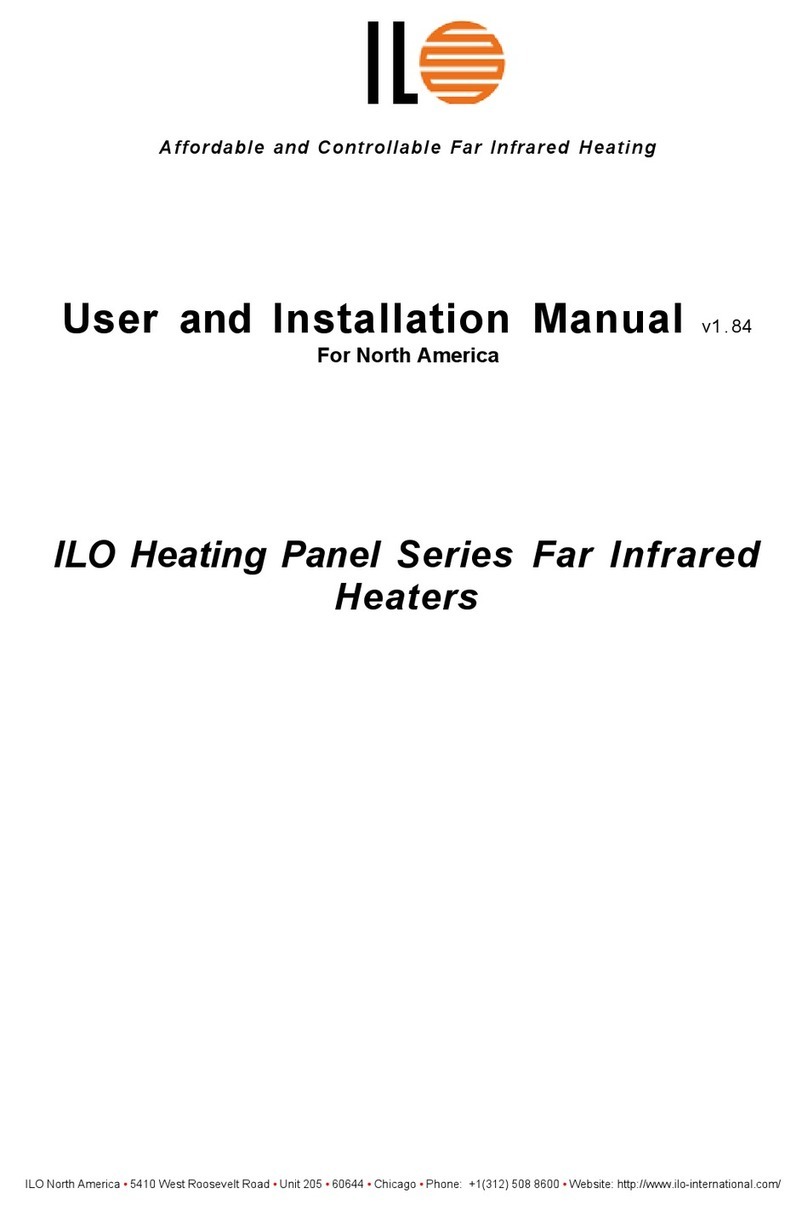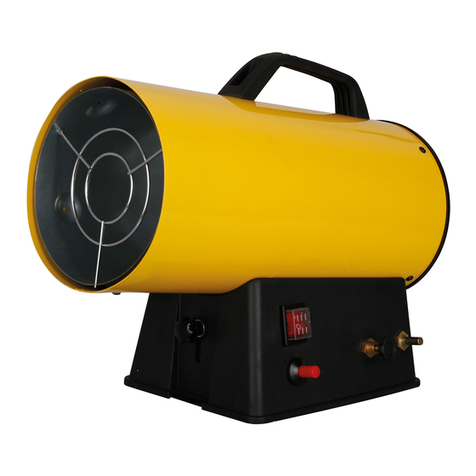www.desatech.com 118419-01E2
SAFETY
d) During fueling, all fuel lines and fuel-
line connections shall be inspected for
leaks.Any leaks shall be repaired prior
to returning the heater to service.
e) At no time shall more than one day's
supply of heater fuel be stored inside
a building in the vicinity of the heater.
Bulk fuel storage shall be outside the
structure.
f) All fuel storage shall be located a
minimum of 762 cm (25 feet) from
heaters, torches, welding equipment
and similar sources of ignition (excep-
tion: fuel reservoir integral with heater
unit or any authorized auxiliary tank
connected to heater unit).
g) Whenever possible, fuel storage
shall be conned to areas where oor
penetrations do not permit fuel to drip
onto or be ignited by a re at lower
elevation.
h) Fuel storage shall be in accordance
with the authority having jurisdiction.
3. Use only the electrical voltage and fre-
quency specied on model plate.
4. Heater is suitable for outdoor use.
5. Heater must be grounded. Use only a
properly grounded three-wire extension
cord. Plug into grounded outlet only.
6. Use only in areas free of ammable va-
pors or high dust content.
7. Minimum clearance from any combust ble
materials: 8 feet (244 cm) from hot air
outlet, 6 feet (183 cm) from top, and 4 feet
(120 cm) from sides and inlet.
8. Locate heater on a stable and level sur-
face while hot or operating or a re may
occur.
9. Heater is acceptable for use on ooring
such as wood (a combust ble material).
10. Use only in well vented areas. Before us-
ing heater, provide at least a 2800 square
cm (three-square-foot) opening of fresh,
outside air for each 30 kw (100,000 Btu/Hr)
of rating.
11. Keep children and animals away from
heater at all times.
12. Never start heater when combustion
chamber is hot or if fuel has accumulated
in combustion chamber.
13. This heater is equipped with a thermostat.
Heater may start at anytime.
WARNING: This product
contains and/or generates
chemicals known to the State
of California to cause cancer or
birth defects or other reproduc-
tive harm.
IMPORTANT: Read this owner’s
manualcarefullyandcompletely
before trying to assemble,
operate or service this heater.
Improper use of this heater can
cause serious injury or death
from burns, fire, explosion,
electrical shock and carbon
monoxide poisoning.
DANGER: Carbon monoxide
poisoning may lead to death!
Carbon Monoxide Poisoning: Early signs
of carbon monoxide poisoning resemble the
u, with headaches, dizziness and/or nausea.
If you have these signs, the heater may not
be working properly. Get fresh air at once!
Have heater serviced. Some people are more
affected by carbon monoxide than others.
These include pregnant women, persons
with heart or lung disease or anemia, those
under the inuence of alcohol and those at
high altitudes.
Make certain you read and understand all
warnings. Keep this manual for reference. It
is your guide to safe and proper operation of
this heater.
1. Use only kerosene, #1/#2 diesel/fuel oil,
JET A or JP-8 fuels to avoid risk of re or
explosion. Never use gasoline, oil from
crank cases, naphtha, paint thinners,
alcohol or other highly ammable fuels.
2. Fueling
a) Personnel involved with fueling shall
be qualied and thoroughly familiar
with the manufacturer's instructions
and applicable regulations regarding
the safe fueling of heating units.
b) Only the type of fuel specied on the
heater's data plate shall be used.
c) All ame shall be extinguished and the
heater allowed to cool, prior to fueling.








